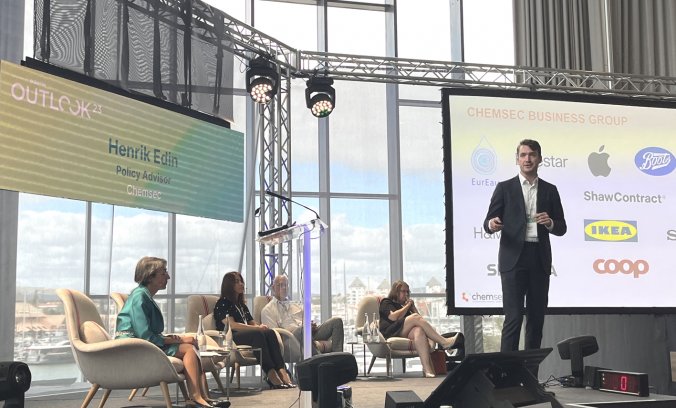
Isbjörn of Sweden introduces 3-layer construction garments for children
Top priority must be phasing out the most harmful chemicals, not just trying to control exposure, NGO says.

3rd November 2023
Innovation in Textiles
|
Vilamoura, Portugal
The cost to society of PFAS (perfluoroalkyl and polyfluoroalkyl substances) – the so-called ‘forever’ chemicals that have been widely used in the textile industry – has been estimated at around €16 billion in environmental clean-up and medical bills, according to Swedish NGO Chemsec.
According to Chemsec policy advisor Henrik Edin, if the societal costs were factored into the equation, PFAS, which has a market value of around €19 per kilo, would have a true price of €18,374 per kg.
He was speaking at the EDANA Outlook 2023 conference for nonwoven-based absorbent hygiene products, which took place in Vilamoura, Portugal, from October 18-20.
“In addition to overstepping the planetary boundaries and microplastics everywhere, we know that exposure to toxic chemicals leads to a loss of four to five IQ points in children and that the sperm count of men in the Western world has halved during the last 40 years,” Edin said. “The problem is that so many new chemicals are still coming onto the market all of the time and we can’t know what they all do until a problem becomes apparent. We can never catch up knowledge-wise. This is a substantial market failure and not enough information is reaching companies or consumers.”
Chemsec’s work centres on reducing the use of hazardous substances by driving political discussion and challenging companies to improve their chemicals management, while informing investors about the risks and opportunities in the chemical industry.
It has also developed a suite of online tools to help companies switch to safer chemicals.
Its SIN List has thousands of users all over the world for identifying hazardous chemicals in different products and processes and the list has now been extended with additional relevant PFAS chemicals.
ChemScore is a sustainability ranking of the world’s largest chemical producers and what they produce that’s on the SIN List, while the Chemsec Marketplace enables users to connect with suppliers of safer alternatives to hazardous chemicals.
“The European Union’s REACH is the most ambitious chemical regulation system in the world, where the burden of proof is on the industry and registration of all chemicals on the market has to be made,” Edin said. “However, it’s now not efficient enough and new chemicals are still too easy to introduce and too hard to restrict once they’re out there. In addition, the substitution to safer chemicals has not occurred at the expected pace. REACH now needs an update.”
The European Green Deal and its Chemical Strategy for Sustainability aims to make EU regulation more efficient, he added.
“The top priority must be phasing out the most harmful chemicals, not just trying to control exposure to them and there is now a massive move for banning PFAS,” Edin said.” Most companies are adapting to the goals of the Chemical Strategy by being more transparent, phasing out the most harmful chemicals and developing and using alternatives.
“Business as usual is no longer an option. The EU has a strong and competent industry and its citizens expect all companies to be more sustainable. Transparency, regulation and predictability are creating incentives for change and the circular economy is now being seen as a massive market opportunity, with the interest from investors growing all the time.”

Business intelligence for the fibre, textiles and apparel industries: technologies, innovations, markets, investments, trade policy, sourcing, strategy...
Find out more